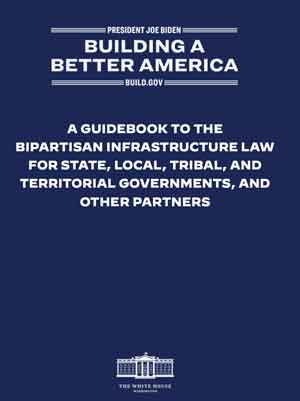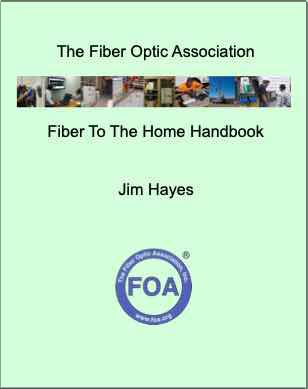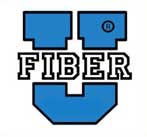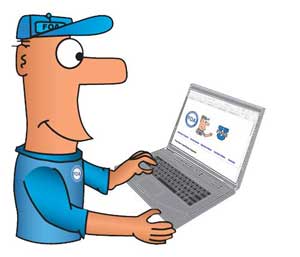Organizations working on broadband projects may find these resources useful in starting a project and finding funding.
FOA also has a page devoted to rural broadband and its unique requirepents.
The NTIA Notice of Funding Opportunity (NOFO) - ONLY FTTH Projects Need Apply
You are going to see the term "NTIA NOFO" a lot now. It will refer to
the document describing the NTIA $43billion fund for broadband. If you
are at all interested in the program, we suggest you download a copy and
read it yourself. We did and found it extremely interesting.
The first thing we did was to search the PDF file for "fiber" to see if
fiber optics was called out specifically. We found 10 locations where
fiber was mentioned and we found these most interesting reading:
Page 7:
With respect to the deployment of last-mile broadband infrastructure,
the Program prioritizes projects designed to provide fiber connectivity
directly to the end user.
Page 14:
The term “Priority Broadband Project” means a project that will
provision service via end-to-end fiber-optic facilities to each end-user
premises.(Footnote 9)
Footnote 9: A project that will rely entirely on fiber-optic technology
to each end-user premises will ensure that the network built by the
project can easily scale speeds over time to meet the evolving
connectivity needs of households and businesses and support the
deployment of 5G, successor wireless technologies, and other advanced
services.
Page 42:
NTIA has determined that “Priority Broadband Projects” are those that
use end-to-end fiber-optic architecture. Only end-to-end fiber will
“ensure that the network built by the project can easily scale speeds
over time to ... meet the evolving connectivity needs of households and
businesses” and “support the deployment of 5G, successor wireless
technologies, and other advanced services.
There will be fiber: that's very important to those seeking grants and to organizations like
the FOA who will be involved in OJT and workforce development for these
projects.
Page 66: (Dig Once is called out also)
Any Funded Network deployment project that involves laying
fiber-optic cables or conduit underground or along a roadway must
include interspersed conduit access points at regular and short
intervals for interconnection by unaffiliated entities. Where a project
proposes to lay conduit, Eligible Entities shall require prospective
subgrantees to propose to deploy a reasonable amount of excess conduit
capacity and to propose a conduit access point interval as part of the
grant application process and shall consider the adequacy of the
prospective subgrantee’s proposed excess conduit capacity and access
points when evaluating the application.
Download your copy here: NTIA Notice of Funding Opportunity
Pew Charitable Trusts' Broadband Education and Training Initiative Helps States Increase High-Speed Internet Access (3/22)
Pew Charitable Trust's peer-to-peer learning network offers research and guidance for state government leaders.
As $billions of broadband funding flows to states as part of the
Infrastructure Investment and Jobs Act and the American Rescue Plan Act,
delivering high-speed internet access to all Americans has never been
more achievable. But the opportunity before state leaders comes with
significant challenges. Policymakers in each of the states must
establish or expand broadband programs, train staff, and navigate local
priorities, all while adhering to federal requirements.
The Pew Charitable Trusts’ broadband education and training initiative
(BETI), launched in August 2021, provides no-cost support to help states
make the most of historic increases in state and federal funding. BETI
is built on a foundation of Pew research highlighting a set of effective
strategies and provides staff training, facilitated expert and
peer-to-peer engagement, and technical assistance on a wide range of
topics, from state broadband program design to data collection.
The resources and guidance collected here will help states identify and
adopt evidence-based strategies to effectively administer federal funds,
accelerating the nation’s progress toward universal, affordable
broadband connectivity. More than 2 dozen states are already working
with Pew's BETI program.
To join or learn more about BETI, please email Jake Varn at jvarn@pewtrusts.org.
Read more about the BETI Program. BETI Project home page.
The PEW Charitable Trusts also tracks the availability of state grants available for broadband expansion. Read more here and look at the links to state programs.
US Broadband Infrastructure Initiative:
Biden Administration Releases Guidebook on Infrastructure Law Implementation (3/22)

The US is allocating lots of money for infrastructure
projects including $45billion for broadband infrastructure, especially
underserved areas like rural. The Biden Administration has released a
Guidebook to the Bipartisan Infrastructure Law in an effort to help
interested parties understand the law. This guidebook will show the
funding and programs available and how to utilize the information.
States and local governments will be using this information to determine
what is applicable to them. The Administration will be updating this
guidebook regularly when new information becomes available.
Here is a link to the Broadband section of the Guidebook.
Here is a link to the entire Guidebook.
Broadband Funding Information From The Source
Andy
Berke, new Special Representative for Broadband at NTIA and former Mayor of
the first Gig City, Chattanooga,
Tennessee spoke recently at a meeting sponsored by Next Century Cities,
an organization whose name explains its focus well. Mr. Berke's
presentation provides an extremely concise, comprehensive and clear
explanation of the broadband parts of the IIJA (Infrastructure
Investment and Jobs Act) that every interested party should read.
For
example, many know the program will provide funds to state agencies for
investment, but did you know that there are requirements for 25%
matching funds or that networks must offer 100/20 Mb/s service and gig
service to anchor institutions?
FOA FTTH/Broadband Resources
Note: Most of the
material in the links below assumes the reader has a general knowledge
of fiber optics and fiber optic networks. Id you need some background,
we recommend you start with two self-study courses at Fiber U, FOA's free online learning site.
Introduction To Fiber Optics In Communications
Basic Fiber Optics
Articles from the FOA Newsletter
March 2022 Is Rural Only Farms?
February 2022 Helping Make Rural Broadband Possible - New FOA Technical/Educational Materials For Those Planning Rural Broadband
January 2022 - California Announces 18 Middle Mile Projects To Bridge Digital Divide (mostly rural)
June 2021 - FTTH Special Issue (FTTH Tech Update covering new equipment and network architectures for rural FTTH.
November/December 2021 - Fiber To The Village in Nepal, $Billions For Broadband In US (But don't hold your breath!)
August, 2021 - Rural FTTH Special Issue
July 2021 - Broadband Internet in California, California Broadband Council report
March 2021 - Can Tapping Fiber Reduce Cost? How Many Fibers? Optimal cable Size.
|

FOA's FTTH
Handbook: We've gathered all our
information on FTTH from the FOA Guide and past issues of
the FOA Newsletter and edited it into a 112 page "FTTH
Handbook." We even added new sections on planning, designing and managing
FTTH Projects. An entire chapter is devoted to DIY (do-it-yourself) FTTH projects in rural areas.
The
Fiber Optic Association Fiber To The Home Handbook
is available from Amazon in print and Kindle
editions.

The FOA Guide is FOA's extensive knowledgebase on fiber optics, with
almost 1,000 pages of technical information. It's written by FOA's
worldwide network of technical advisors and is non-commercial, just
reliable technical information from experienced fiber techs, many of
whom are teaching the subject.
Here are some topics related to broadband:
FTTH (Fiber To The Home)
There is also a section on Fiber For Wireless Networks. that covers both cellular and WiFi networks.

Fiber U
is FOA's Free Online Learning Site, with over two dozen free self-study
courses starting with the Basics of Fiber Optics and including a number
of courses on technical skills and applications of fiber optics.
Free
Online "FTTH" Course on Fiber U
Free
Online "Fiber For Wireless" Course on Fiber U

Take the Fiber U FTTH course and
Certificate Test FREE
Fiber U self-study courses themselves have always been free,
but we have charged for the Fiber U Certificate of
Completion test which uses an online testing service. So
everyone can take advantage of all the new and updated FTTH
materials we've created, FOA will offer the testing for the
Fiber U Certificate
of Completion for the Fiber
U FTTx self-study course free to everyone
completing the course. Tell your
employees, customers, everybody!
Designing
FTTH Networks? If you are involved in the design
of FTTH networks but new to fiber optics, start with
the Fiber U Fiber
Optic Network Design course then take the Fiber
U FTTx self-study course.

FOA Videos On YouTube
FOA has a YouTube channel with over 100 videos on fiber optics,
including 70+ lectures and many technical instructional videos.
Including are these videos on Fiber Optics:
FOA's
YouTube Channel:
Lecture 25: FTTx - Fiber To The Home, Premises, Curb,
Business, etc.(Overview)
Lecture
63 FTTH Network Architectures
Lecture
64 FTTH Passive Optical Networks (PONs)
Lecture
65 FTTH Network Design
Lecture
66 FTTH Network Installation and Test

FOA publishes a monthly newsletter that covers the fiber optic industry and FOA educational activities. We recommend you subscribe to keep up with the latest news in fiber optics. Here are some recent articles on FTTH and broadband.
March 2022 Is Rural Only Farms?
February 2022 Helping Make Rural Broadband Possible - New FOA Technical/Educational Materials For Those Planning Rural Broadband
January 2022 - California Announces 18 Middle Mile Projects To Bridge Digital Divide (mostly rural)
June 2021 - FTTH Special Issue (FTTH Tech Update covering new equipment and network architectures for rural FTTH.
November/December 2021 - Fiber To The Village in Nepal, $Billions For Broadband In US (But don't hold your breath!)
August, 2021 - Rural FTTH Special Issue
July 2021 - Broadband Internet in California, California Broadband Council report
March 2021 - Can Tapping Fiber Reduce Cost? How Many Fibers? Optimal cable Size.
Worth Reading (Or Watching)
The FOA finds news
articles relevant to fiber optics and FTTH and publishes them in the
monthly FOA Newsletter. Here are a sample of recent ones on FTTH.
Biden Administration Releases Guidebook on Infrastructure Law Implementation
Here is a link to the Broadband section of the Guidebook.
Here is a link to the entire Guidebook.
Pew Charitable Trust's peer-to-peer learning network offers research and guidance for state government leaders.
To join or learn more about BETI, please email Jake Varn at jvarn@pewtrusts.org. Read more about the BETI Program. BETI Project home page.
The PEW Charitable Trusts also tracks the availability of state grants available for broadband expansion. Read more here and look at the links to state programs.
US Broadband Coverage By Service
Provider from the FCC
Mapping
Broadband In The US, State By State
Next
Century Cities has completed a survey of broadband in the US
by state because the FCC data is widely known to be
inaccurate. Next Century Cities (“NCC”) is a nonprofit,
non-partisan organization that advocates for fast,
affordable, and reliable broadband Internet access across
the U.S. They work alongside local officials in communities
of all sizes and political stripes to eliminate the digital
divide. As NCC has documented in filings and publications, the
Federal Communications Commission’s (“FCC” or “Commission”)
maps have long told a different story of broadband access
than what residents across the country actually experience.
It is widely known that the FCC’s broadband availability
data understates the seriousness of, and lacks granularity
to adequately address, persistent gaps in connectivity. Read
the NCC Report here. Use
this link if you want to jump to the report for a
particular state.
In 2021, the number of states
preserving legal barriers to municipal broadband
networks dropped from 19 states to 17 states,
ILSR Community Networks
Things To Learn From A Town That Voted Down Fiber.
Six
Community Broadband Networks Demonstrate Diversity of
Approaches to Connectivity Challenges ILSR Community
Networks.
Mapping
Broadband Access With Garbage Trucks, and Other
Innovative Municipal Initiatives in Shreveport,
Louisiana - Episode 19 of Connect This! from
Community Broadband Networks
|





